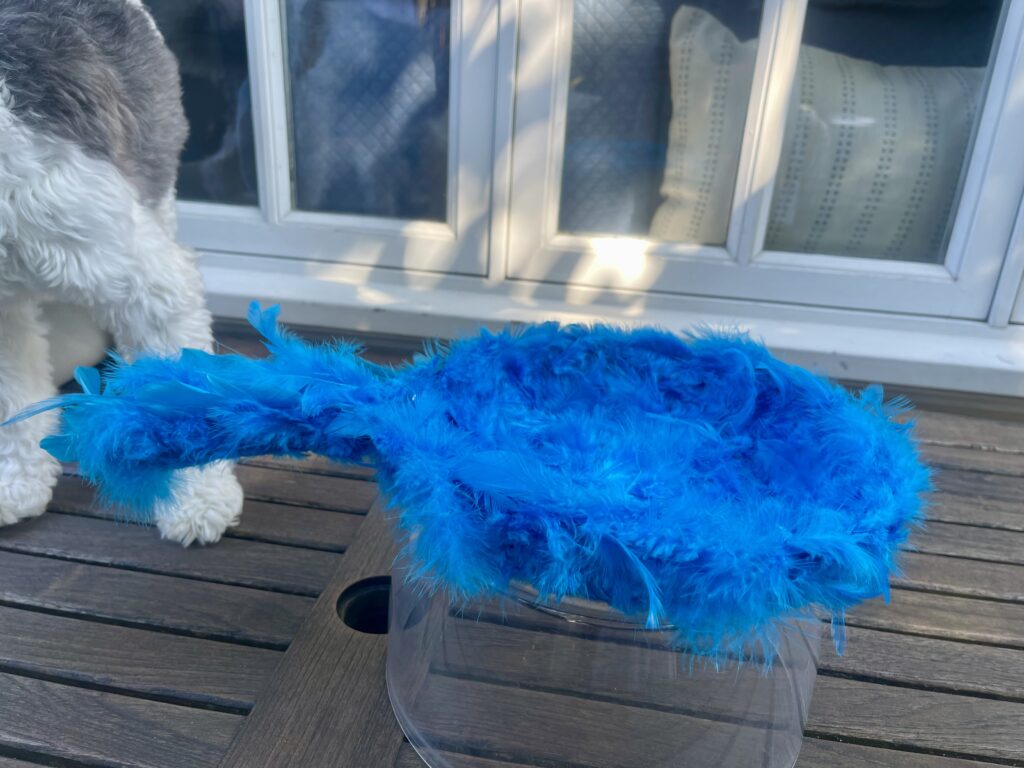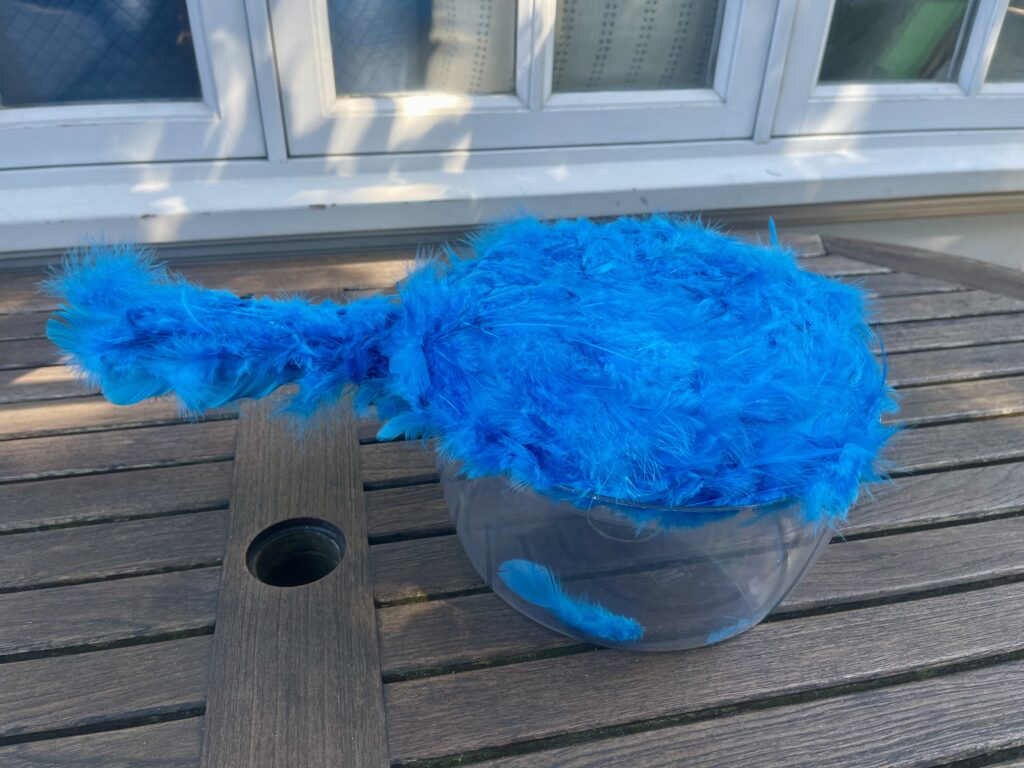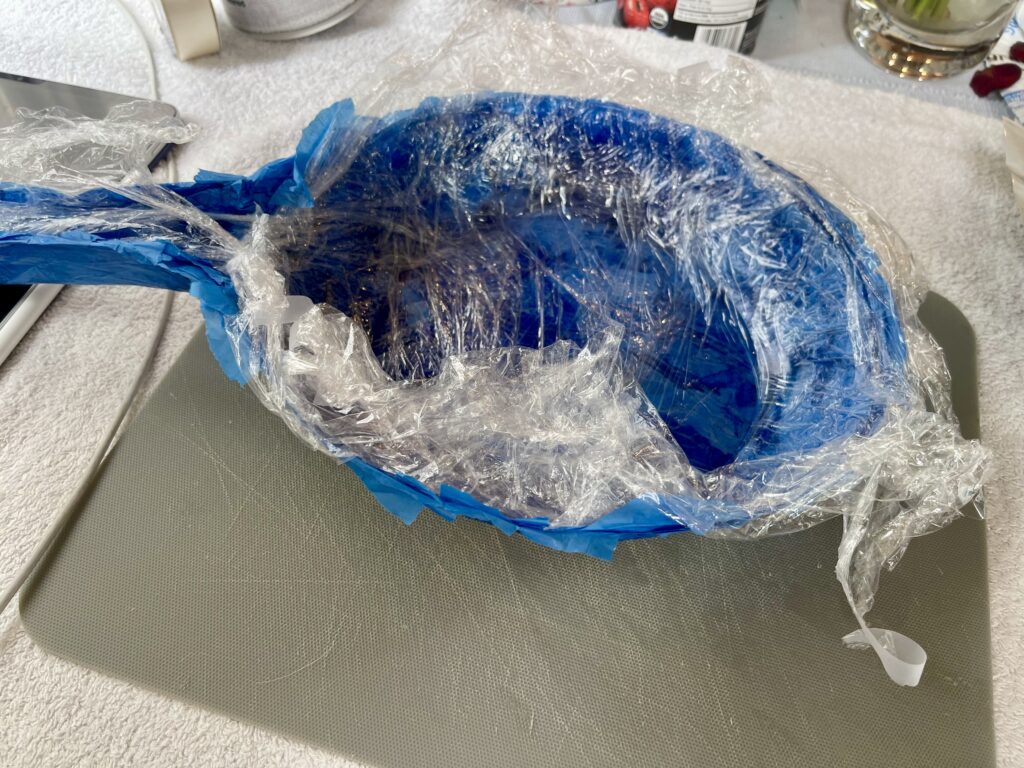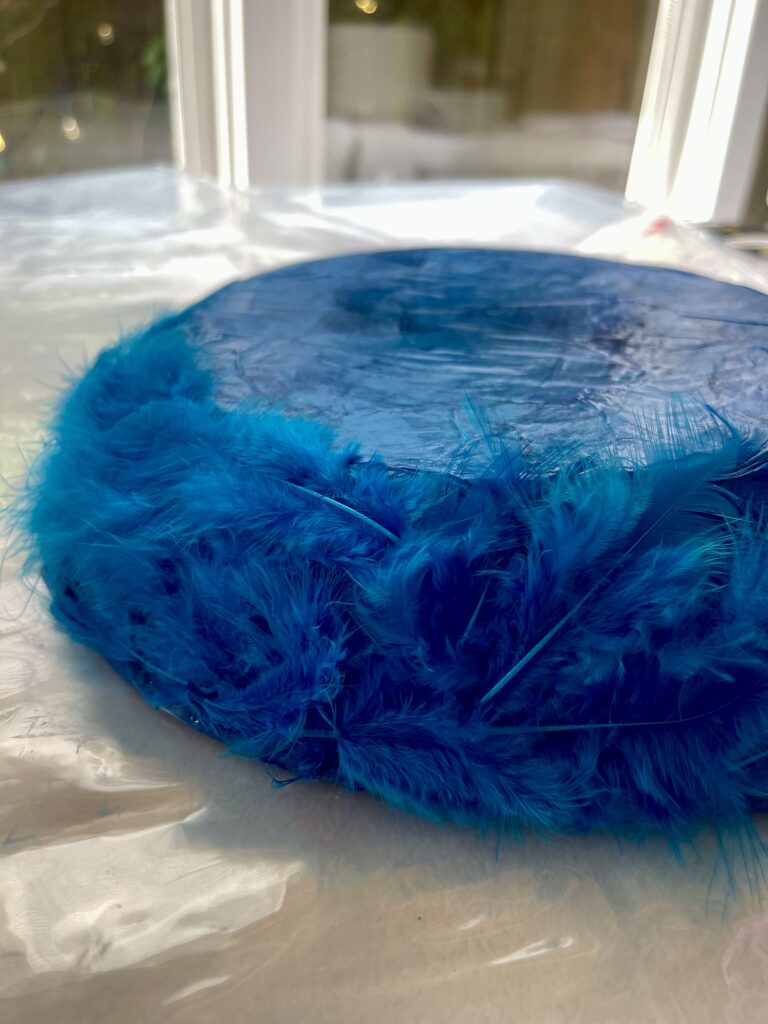Furry Teacup
This third project asked us to put on our creative hats and create something from entirely inappropriate materials. (Items that would be utterly useless for their intended purposes.)
From assignment description: In 1936, a young surrealist sculptor by the name of Meret Oppenheim met her friend Pablo Picasso at a café in Paris. She was wearing a self-designed bracelet wrapped in fur. Picasso remarked that one could cover anything in fur, and Oppenheim joked that even her plate and cup could be. Her ensuing sculpture of a fur teacup became one of the most famous artworks of the surrealist art movement, and of the century.
Below is my final design, process work, and write-up.




What was your idea, and how did you decide on the material(s)?
When I read the assignment brief, which asked us to create something from entirely inappropriate materials, several ideas came to mind. From an umbrella made of sponges to a coffee cup made of sugar cubes, I brainstormed various items that would be utterly useless for their intended purposes.
While running errands, I was captivated by the bright colours of the dishes and kitchenware in the Le Creuset store. Their products are not only cheerful and vibrant but also highly functional. Inspired by their iron skillet, I put an impractical twist on it by recreating it out of feathers. Why feathers? Well, why not? It’s totally impractical and quite funny, and I thought it would be a fun challenge to see if I could actually create it.
How do the materials change or subvert the meaning of your design?
Making a frying pan out of feathers subverts the meaning of the design by transforming a highly functional and practical kitchen tool into an entirely non-functional and whimsical object/decoration. A frying pan is typically associated with durability, heat resistance, and utility in cooking. These essential characteristics are completely undermined by using feathers, which are an inherently delicate and flammable material. Furthermore, feathers can’t hold liquids, support any heavy weight, or be easily cleaned and sanitized. My design is entirely impractical, serving no purpose other than being a fun object to look at.
Making a frying pan out of feathers really flips the whole idea of what a frying pan should be on its head. It’s funny and absurd because feathers can’t handle the job of a frying pan at all. I like how this made me consider how we usually expect things to work just because of how they look.
What did you discover during the process?
During the ideation process, I realized just how much we value everyday items based on their practicality. There is certainly a strong connection between how something looks and what it actually does, and I think I approached this in a creative way.
During the creation process, I discovered the challenges of working with such delicate materials. I learned how difficult it is to shape and secure feathers into a cohesive form and the limitations of their structural integrity. To compensate, I had to create a base of paper-mache that I could then glue feathers on. Here, I discovered that acrylic medium can work as a bonding agent/glue substitute.
Additionally, I gained a deeper appreciation for the craftsmanship involved in creating everyday functional objects and the thought that goes into selecting appropriate materials for their design.
What or who inspired the design?
I was inspired by several artists known for using unconventional materials in their artwork. One artist who influenced me is contemporary Brazilian artist and photographer Vik Muniz. He creates intricate images and portraits using materials like chocolate syrup, sugar, and garbage. While doing research, I was captivated by his innovative use of unusual materials and how his work often comments on global social and environmental issues.
Another artist who inspired me is Nick Cave. He is an American sculptor, dancer, and performance artist renowned for his Soundsuit series. These wearable assemblages made from fabric and found objects are characterized by their vibrant, whimsical, and majestic designs. He combines fashion and sculpture, and I loved seeing his use of colour and texture in all the different materials.
What artist or designer can you think of who practices social responsibility in their work?
One artist that instantly comes to mind is Anishinaabe artist and activist Rebecca Belmore. I first learned about her in an Indigenous Studies class, where we spent some time exploring different artists and their unique expressions. I find Belmore’s use of performance, installation, and video to be incredibly impactful, especially when it comes to issues like violence against Indigenous women and environmental concerns. Her work does a great job of raising awareness and pushing for change on these important topics.
While researching Belmore, I also discovered Kent Monkman, a Cree artist who creates provocative works challenging colonial narratives and highlighting Indigenous perspectives. His paintings and installations often feature his alter ego, Miss Chief Eagle Testickle, which critiques stereotypes and reclaims Indigenous histories. Kent uses his art to address the effects of colonialism and advocate for cultural recognition and justice.
Brainstorming/progress work




